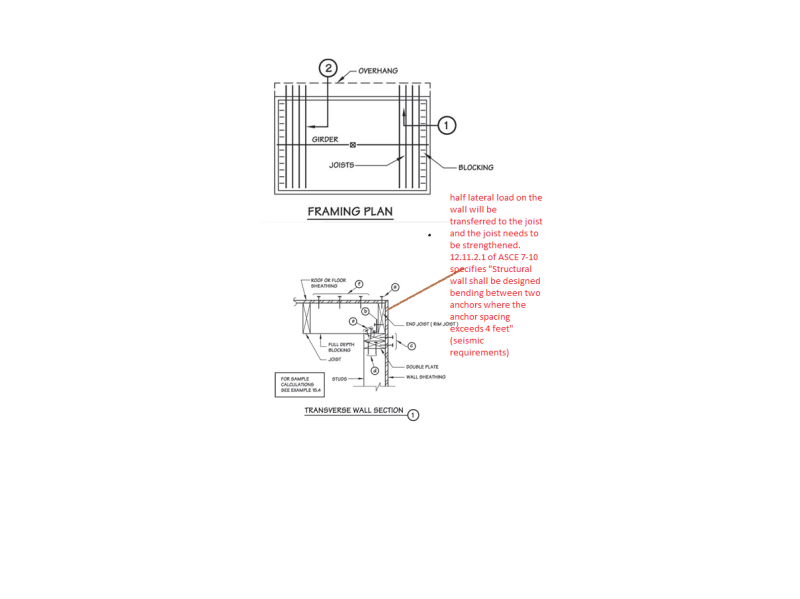well. ok. in the particular building i am working on there are are bearing walls supporting the parallel floor joist at 15' spacing. This is where blocking (by standard constrution) between the floor joists (at each supported end of the joist)exists that stops the "rolling over" of the joist (and also where metal shear clips are attached from this blocking to the top plate of shear walls below). I do not see anything special about the floor joists that are closer to the exterior wall as far as "rolling over" as opposed to those that are more removed. if this is true, why not block full length at 4 ft centers between all the joists?
thank you for you responses.. but is there a code requirement? a definitive load path requirement? the building is almost 200 feet long, blocking for 3 bays of floor joist at FOUR foot on center for 400 feet of wall. shall i also require it at 4 ft centers for the 2 interior shear walls? - thats 564 pieces of 16" 2x blocking!!!! comon!!! if there isnt a concrete definitive reason that isnt taken care of by other standard framing, i need to figure that out ?? i know about the tension requirements for concrete/masonry attachment, but this is all wood construction.
for the exterior (or interior) shear walls to "separate from the floor" the floor diaphragm nailing/plate nailing, needs to fail, which if your floor diaphgram is not loaded large enough to need blocking, means that your shear walls perpendicular to the outside walls are failing. and besides, just how much purchase you think you can get from 2x blocking attached to the top plates? clip at 500 lbs maybe?
Sorry, gentlemen, i dont get it. and im having a hard time finding how its "typical" or "standard". (could it just be for ceiling drywall attachment? nah)
thanks for any input. Eng-tips rarely fails me!

